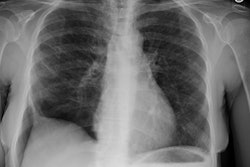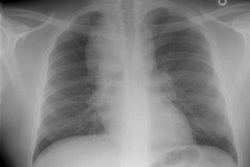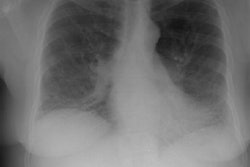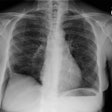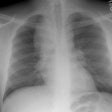Radiographics 1995 Mar;15(2):421-37
Thoracic sarcoidosis: radiologic-pathologic correlation.
Miller BH, Rosado-de-Christenson ML, McAdams HP, Fishback NF
Sarcoidosis is a systemic disease of unknown etiology with variable presentation,
prognosis, and progression. At diagnosis, about 50% of patients are asymptomatic, 25%
complain of cough or dyspnea, and 25% have skin lesions (erythema nodosum, lupus pernio,
or plaques or scars) or eye symptoms (or develop them during the course of the disease).
Bilateral hilar adenopathy is the most common radiographic finding. Other characteristic
findings include interstitial lung disease, occasional calcification of affected lymph
nodes, and pleural effusions and thickening. Computed tomography is more sensitive than
radiography in the detection of adenopathy and subtle parenchymal disease; gallium-67
scintigraphy is useful in identifying extrathoracic sites of involvement, detecting active
disease, and assessing response to treatment. The diagnosis is established most securely
when clinicoradiologic findings are supported by histologic evidence of widespread
noncaseating granulomas. The disease ranges from a self-limited subclinical process to
chronic debilitation and death, with the major complications being fibrosis, mycetoma
formation, and cor pulmonale. Because the disease so often involves thoracic structures,
chest radiography plays a crucial role in the diagnosis, staging, and follow-up of
sarcoidosis.
Published erratum appears in Radiographics 1997 Nov-Dec;17(6):1610
PMID: 7761646, UI: 95281802

